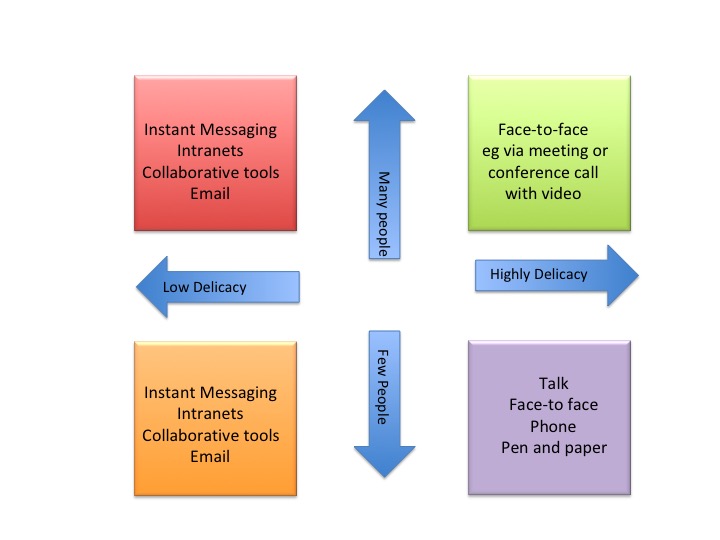As IORG Social Media Chair, for the past four weeks my theme has been whether or not business email overload will still be a problem in 2019 and if so can we reduce it. Thinking outside the inbox will a key way to reduce business email overload in 2019. (A shorter version was published on the IORG website).
Thinking outside the inbox is neither easy nor intuitive, There are now multiple excellent other ways to communicate electronically from instant messaging via Skype for Business or What’s App to sophisticated collaborative tools like Slack or SharePoint. Sadly, what often happens is that organisations adopt alternatives to email with no clear guidelines on what to use when. With no clear conventions and frameworks all that happens is that email overload turns into a severe attack of information overload because now you have at least three if not four or five different channels to check.
In the absence of organisational guidelines, here is a simple framework which others with whom I have worked have found very useful. Its called the PNPD Framework for Thinking Outside the Inbox
For any form of communication, there are basically four factors to consider when deciding which medium to use.

Here are two examples of how to apply the PNPD framwork to think outside the inbox to reduce email and information overload.
Scenario 1 – Conversation
Private between two people, delicate but a permanent record of the final discussion will be needed (eg performance appraisal, salary negotiation, disciplinary meeting).
Best option – conversation (face-to-face if possible otherwise virtual) followed up by an email confirming the discussion.
Privacy is high: Numbers are low: Permanency is high: Delicacy is high.
Scenario 2 – Instant messaging
A public message for several people if not the whole office which if not seen here and now is of no relevance later. It does not matter how people react. For example, testing the fire alarm, cakes for your birthday.
Best option – Instant messaging.
Privacy is low: Numbers are high: Permanency is low: Delicacy is low.
For more information on the PNPD Thinking Outside the Inbox Framework see Taking Control of Your Inbox.
It is my view that email is here to stay and the real challenge is how to manage our use of it better. Clearly one way is to manage the actual flow of email traffic in and out of your inbox more efficiently. In relation to the former this means being brave and thinking outside the inbox and consciously choosing to use an alternative.
What is your view?
Tags: IORG, Reduce business email overload, Taking Control of Your Inbox, Thinking Outside the Inbox